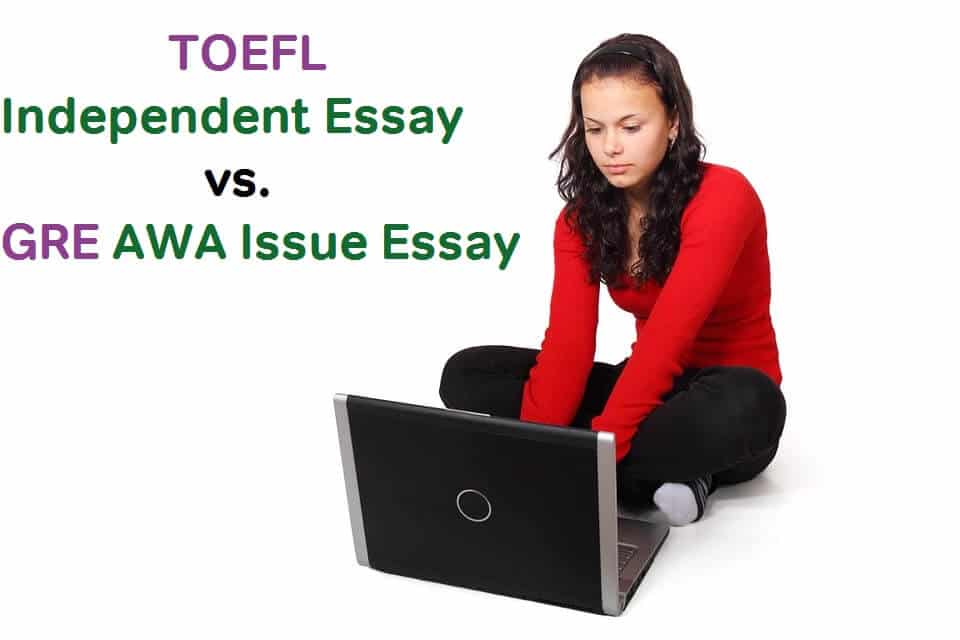
Many observant test-takers have noted that the TOEFL Independent Essay and the GRE AWA Issue Essay are very similar. If you have to take both tests at the same time, you may wonder what the difference is.
Make no mistake about it. As similar as these tasks are, there are some very important differences. In this post, we’ll briefly look at the similarities between these two tasks. Then we’ll explore the unique ways you should approach each of these essays.
What TOEFL Writing Task 2 and the GRE AWA Issue Task Have in Common
The GRE AWA Issue Task requires you to examine a social issue of some kind. You will be presented with an issue or debate that has two sides. (For examples of this, see the GRE website’s official AWA Issue Topic Pool.) In your response, you’ll analyze both sides and give your own opinion.
In most cases, TOEFL Independent Writing topics also have this same “issue with two sides” structure. And in these kinds of TOEFL issue essays, you’ll also be required to look at both sides and state an opinion.
In both essay prompts, you will not be given any external sources. There isn’t a reading passage, a lecture to listen to, or any other informational resource you can cite. Instead, you construct your own original argument on the issue in the prompt.
Differences in Subject Matter and Structure
Notice that I said most TOEFL Independent Writing topics have a GRE-style issue structure. On occasion, a TOEFL Writing Task 2 prompt might ask you to describe something related to an important social issue, instead of looking at two sides of a social debate. For a description of this alternative format for the TOEFL Independent Writing Task, see Lucas’s post on TOEFL Writing topics.
Even when a TOEFL Independent Writing topic takes the “two sides” format, it will have different instructions than the GRE AWA Issue Task. The GRE asks you to “discuss the extent to which you agree or disagree” with a statement, or ask you to “discuss which view more closely aligns with your own position.” The TOEFL will generally either ask you to pick the position you clearly prefer, or to discuss the advantages and disadvantages of a specific social practice.
Difference in the Recommended Length For Your Essay
There isn’t an absolute word count or paragraph count for either essay. But typically, successful TOEFL Independent Essays are 250-450 words long, with 3-5 paragraphs.
The GRE AWA Issue task is “deeper” and requires more writing. Most successful GRE AWA Issue Essays are 4-6 paragraphs long, and between 550-650 words in length.
Word count is probably a better measure of the best length compared to paragraph count. What’s most important about your paragraphs is that they are properly, logically organized. On either essay, your ideas may logically fit in three paragraphs, or four or five and so on. If your paragraphs don’t match the “recommended” number of paragraphs, don’t try to forcibly restructure them.
Differences in How You Structure Your Response
There is one other very important structural difference between TOEFL Independent writing and GRE AWA Issue writing. In the TOEFL Independent Essay, it’s best to pick just one side and defend it. Trying to agree partly with both sides and take a middle position will make your TOEFL essay too complicated and long that you risk running out of time. In contrast, it’s perfectly OK to take a middle position in GRE AWA Issue. You don’t absolutely need to take a middle position, but you can, and doing so will often enrich your response.






Leave a Reply